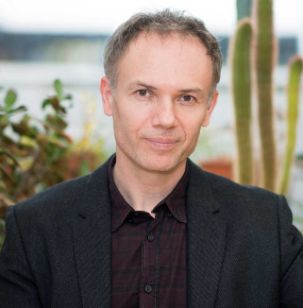Abstract
We are investigating bacterial and eukaryotic ribosomes and their functional complexes to obtain insights into the process of protein synthesis. Building on our studies of bacterial ribosomes we have increasingly shifted our attention to studying eukaryotic cytosolic and mitochondrial translation and were successful in obtaining first insights into the atomic structures of eukaryotic and mammalian mitochondrial ribosomes (1-3), which pose a significant challenge for structural studies as they are more complex and heterogeneous than their bacterial counterparts. The focus of our research has been to understand eukaryotic translation initiation, targeting of proteins to membranes, regulation of protein synthesis, and the assembly of eukaryotic ribosomes (4-6). The complete molecular structure of the unusual mammalian mitochondrial ribosome specialized for synthesis of membrane proteins was one of the first examples of electron microscopic structure determinations that allowed de-novo building, refinement and validation of the structure. These results revealed the interactions between tRNA and mRNA in the decoding centre, the peptidyl transferase center, and the path of the nascent polypeptide through the idiosyncratic tunnel of the mammalian mitochondrial ribosome. Furthermore, the structure suggests a mechanism of how mitochondrial ribosomes, specialized for the synthesis of membrane proteins, are attached to membranes (3). Recent results on the unique aspects of mitochondrial translation and the divergent structure of mitochondrial ribosomes will also be presented (7, 8).
1. Rabl J, Leibundgut M, Sandro F. Ataide SF, Haag A and Ban N. (2010) Nature 331(6018):730-6.
2. Klinge S, Voigts-Hoffmann F, Leibundgut M, Arpagaus S, Ban N. (2011) Science, 334, 941-8.
3. Greber BJ, Bieri P, et al. (2015) Science. 348(6232):303-8.
4. Erzberger JP et al. (2014) Cell 158(5):1123-35.
5. Greber BJ, et al. (2016) Cell 164(1-2):91-102.
6. Kobayashi K, Jomaa A, et al. (2018) Science. 360(6386):323-327.
7. Kummer E, et al. (2018) Nature 560:263-267.
8. Ramrath et al. (2018) Science 362(6413):422
About Prof. Nenad Ban
Nenad Ban was born in Zagreb, Croatia and educated at the University of Zagreb. He continued with his studies in the US where he obtained a PhD degree at the University of California at Riverside in the group of Alexander McPherson. His interest in large macromolecular assemblies led him for his postdoctoral work to the Department of Molecular Biophysics and Biochemistry at Yale University where he determined the atomic structure of the large ribosomal subunit by X-ray crystallography, as part of the group in the laboratory of Thomas Steitz. These results demonstrated that the ribosome is a ribozyme.
